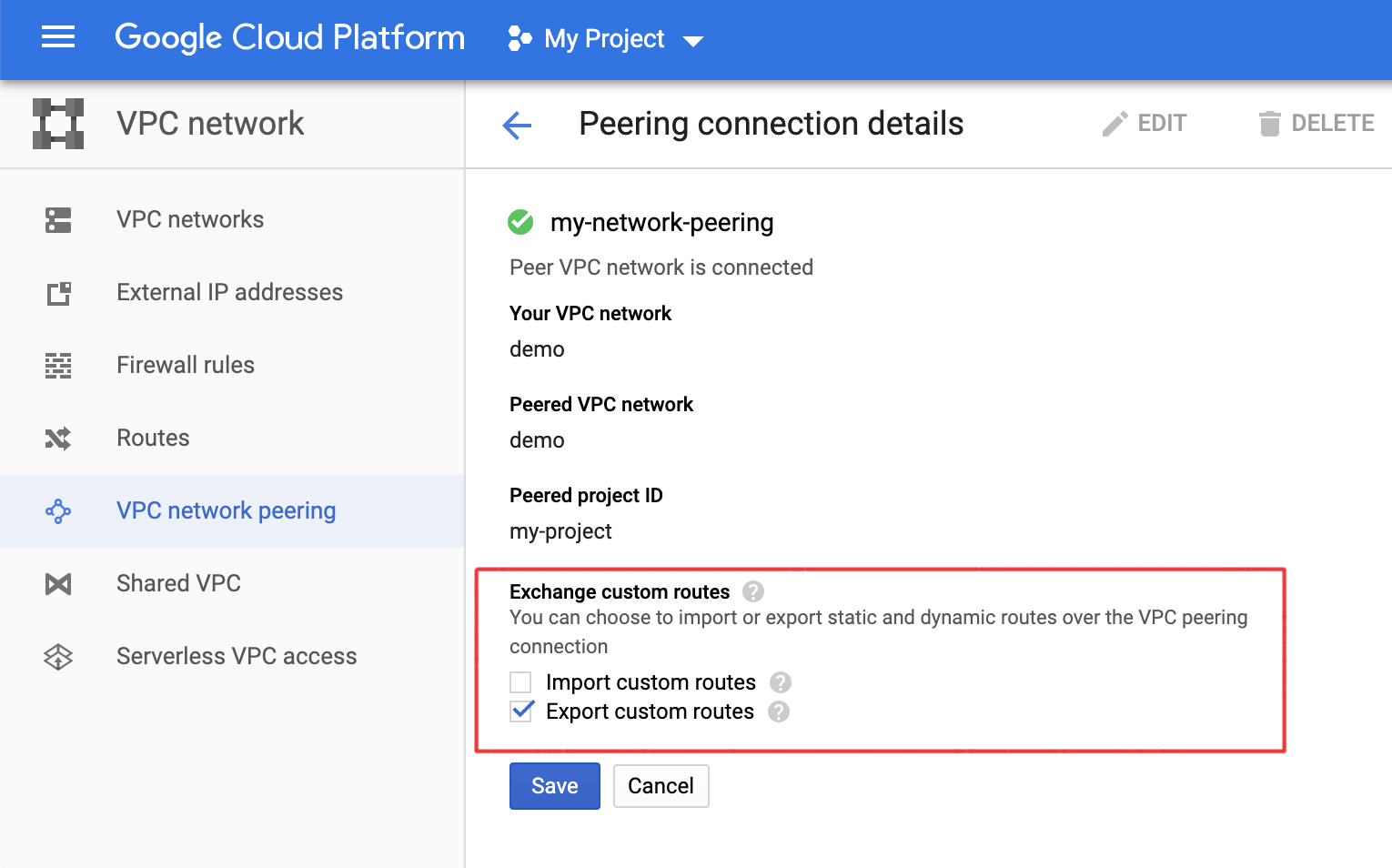You can utilize VPC peering on the Google Cloud Platform with Harmony SASE, by exporting the route of your Harmony SASE network to the VPC you are peering with and subsequently importing it in the peered VPC.
This allows for a design where only a single tunnel is required from Harmony SASE to the "shared" Google Cloud VPC. Other peered VPC must know how to get back to Harmony SASE subnets by having the Harmony SASE route in the routing table.
Export the custom routes from your shared VPC
